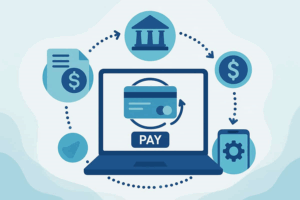Private lending has become an attractive alternative to traditional bank loans in Australia. Whether you’re a small business owner, property investor, or an individual with unique financial needs, private lending offers flexibility, speed, and customised solutions. However, qualifying for a private loan requires an understanding of the process, eligibility criteria, and the necessary documentation. Let’s explore what borrowers need to know to secure private funding.
Understanding Private Lending
Private lending involves borrowing money from non-bank entities such as private individuals, groups, or specialised lending companies. These loans often cater to those who may not meet the stringent requirements of traditional banks. The advantages include quicker approvals, tailored terms, and the willingness to fund riskier ventures. However, these benefits often come with higher interest rates and shorter repayment periods due to the short-term nature of these loans.
Key Eligibility Criteria for Private Lending
While eligibility criteria vary among lenders, here are some common factors they consider:
- Credit History
- Private lenders are more flexible than banks, but they will still evaluate your credit history to assess your reliability.
- Borrowers with poor credit can often qualify, though they may face higher interest rates or require additional security.
- Collateral
- Collateral is critical in private lending. Lenders typically seek property, vehicles, or other assets as security.
- The type and value of collateral may determine the loan amount and terms offered.
- Purpose of the Loan
- Lenders will want a clear understanding of how you intend to use the funds. Whether it’s for property investment, business growth, or debt consolidation, transparency is key.
- Repayment Capacity
- Your ability to repay the loan is crucial. Lenders assess income, cash flow, or revenue streams to gauge your financial stability.
- Loan-to-Value Ratio (LVR)
- Lenders use LVR to measure the loan amount against the value of the collateral. Most private lenders prefer an LVR of 70-80%, although this can vary.
- Experience or Expertise
- For specialised loans, such as property development, lenders may evaluate your experience in the field. Demonstrating industry knowledge can strengthen your application.
Essential Documentation
To qualify for a private loan, you’ll need to present certain documents. Being prepared can speed up the process and increase your chances of approval. Typical requirements include:
- Identification Documents
- Provide proof of identity, such as a passport, driver’s licence, or birth certificate.
- Proof of Income
- Submit payslips, tax returns, or bank statements to verify your income.
- For self-employed individuals, recent profit and loss statements may be required.
- Asset and Liability Statement
- Outline your assets (property, investments, savings) and liabilities (debts, credit cards, mortgages).
- Details of the Collateral
- Provide property appraisals, vehicle registration papers, or other asset valuations.
- Loan Purpose Statement
- Clearly state why you need the loan and how you plan to use the funds. Including a business plan, if applicable, can strengthen your case.
- Repayment Plan
- A detailed plan showing how you intend to repay the loan reassures lenders of your financial discipline.
Tips for Securing Private Loans
- Research the Market
- Not all private lenders are created equal. Compare interest rates, terms, and conditions to find a lender that aligns with your needs.
- Look for lenders with experience in your loan type, whether it’s business financing or property development.
- Build a Strong Application
- Be honest and thorough in your application. Highlight strengths such as a valuable asset or steady income.
- Address potential weaknesses upfront, such as explaining past credit issues and how you’ve resolved them.
- Prepare a Detailed Loan Proposal
- Include specifics such as loan amount, purpose, repayment schedule, and collateral details. A well-prepared proposal shows professionalism and commitment.
- Demonstrate Financial Stability
- Private lenders favour borrowers who can show consistent income or cash flow. If your financial history is patchy, consider involving a co-borrower or guarantor.
- Negotiate Terms
- Private lenders are more flexible than traditional banks, so don’t hesitate to negotiate interest rates, repayment periods, or fees. Be respectful but assertive.
- Seek Professional Advice
- Engaging a financial advisor or broker can help you navigate the complexities of private lending. They can connect you with reputable lenders and improve your chances of approval.
Potential Challenges and How to Overcome Them
- High Interest Rates
- Private loans typically have higher rates than bank loans. Shop around and compare offers to ensure you’re getting competitive terms.
- Shorter Loan Terms
- Private loans often have shorter repayment periods, which can lead to higher monthly payments. Plan your budget carefully and consider refinancing options if needed.
- Unregulated Lenders
- The private lending sector includes unregulated players. Conduct due diligence to avoid predatory lenders. Check reviews, ask for references, and ensure the lender operates transparently.
Advantages of Private Lending
Private lending is not just for those who can’t secure traditional loans; it’s also an option for those seeking:
- Faster Processing: Loan approvals often take days rather than weeks.
- Flexible Terms: Customised repayment schedules and tailored solutions.
- Access for Non-Traditional Borrowers: Ideal for self-employed individuals, those with bad credit, or those pursuing unconventional projects.
The Role of Technology in Private Lending
Digital platforms are revolutionising private lending in Australia. Online marketplaces and private loan brokers connect borrowers with private lenders, offering greater transparency and convenience. These platforms often use algorithms to match borrowers with suitable lenders, expediting the process. If you’re tech-savvy, consider exploring peer-to-peer lending platforms as a viable option.
Final Thoughts
Private lending in Australia provides a lifeline for borrowers with diverse financial needs. By understanding eligibility criteria, preparing thorough documentation, and following the tips outlined above, you can enhance your chances of securing a private loan. Remember to conduct due diligence, evaluate the lender’s reputation, and ensure that the terms align with your financial goals.
Private lending is not a one-size-fits-all solution, but for many Australians, it represents an opportunity to access flexible funding on their terms. With the right preparation and approach, you can turn this opportunity into a financial stepping stone.


















